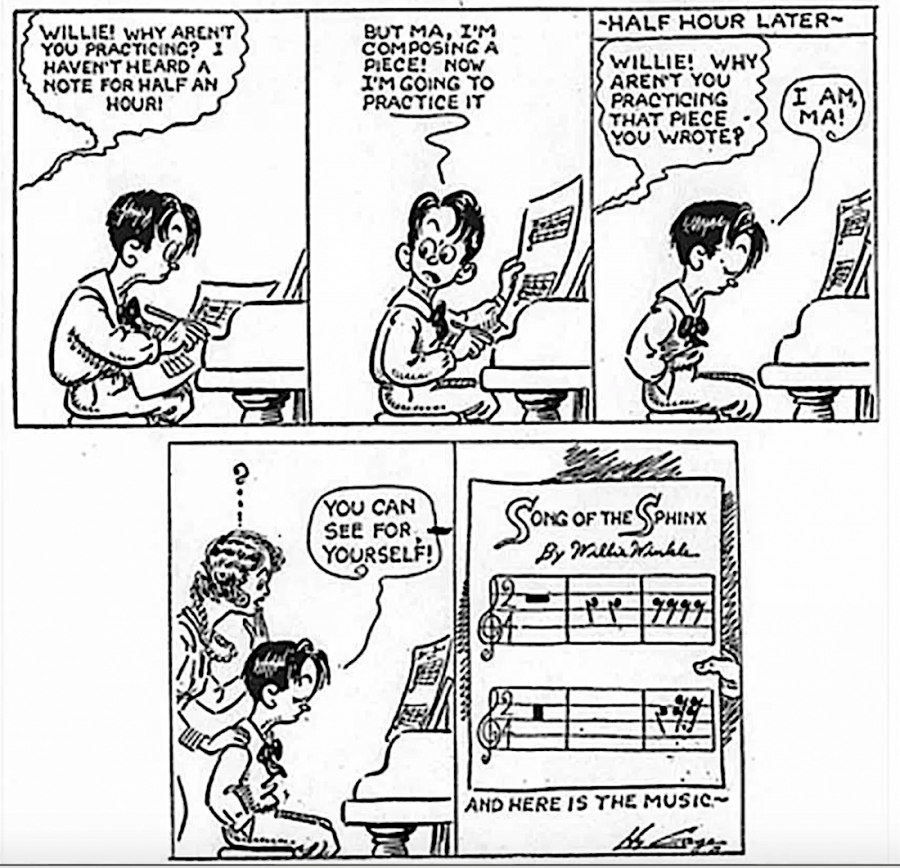Even if you aren’t a fan, a mention of the Grateful Dead will conjure hirsute Jerry Garcia and band, lit by psychedelic lasers from without, hallucinogens from within. You’ll recall the Dead’s logo, the skull with a lightning bolt in its crown; you’ll remember tie-dye shirts with rose-crowned skeletons on them; you’ll see again those grinning, dancing bears your college roommate stuck all over her laptop and on the back of her beat-up 30-year-old Toyota.
You might call to mind these pictures with more or less fondness, but you need never to have heard a single song or have stepped into the parking lot of a Dead show to have imbibed all of the band’s iconic imagery.
Deadheads, however, will see these many signifiers as windows onto a richly textured extended universe, one filled with lore and trivia, and inhabited by-behind-the-scenes creatives who built the band’s look, stage show, and folk-occult mythology.
The Dead were at the center, but their legacy would never have carried such weight without Owsley Stanley, for example, nicknamed “Bear”—who inspired the dancing (actually, marching) bears and came up with the skull and lightning bolt (both drawn by artist Bob Thomas). Stanley also bankrolled the Dead with money from his LSD empire, built their “wall of sound” system, and served as producer, sound engineer, and all-around generative force.
No less critical to the band’s existence was Robert Hunter, the lyricist who penned the words to “Truckin’,” “Dark Star,” “Casey Jones,” “Uncle John’s Band,” “Terrapin Station,” “Ripple,” “Jack Straw,” “Friend of the Devil,” “Box of Rain,” “Touch of Grey,” and other songs central to their huge live and studio catalogue, including favorites like “Bertha,” a live-only tune “probably” about “some vaguer connotation of birth, death and reincarnation. Cycle of existences, some kind of such nonsense like that.”
So Hunter told an interviewer about “Bertha”’s origin, adding for clarification, “but then again, it might not be. I don’t remember.” The lyricist, who died yesterday, wrote “dreamlike variations on the American folk tradition,” notes Neil Genzlinger at The New York Times—songs that “meshed seamlessly with the band’s casual musical style, helping to define the Grateful Dead as a counterculture touchstone.”
Hunter earned the admiration not only of the band and its legions of fans, but also of fellow songwriters like Bob Dylan, who thought of Hunter as a peer and often collaborated with him. “He’s got a way with words and I do, too,” Dylan told Rolling Stone. “We both write a different type of song than what passes today for songwriting.” Like Dylan, Hunter worked in a mystical vein, “with a boundless knowledge of subjects running the gamut from classic literature to street life,” notes The Washington Post.
Hunter was a natural storyteller who wrote “authoritatively about everyone from card sharks and hustlers to poor dirt farmers and free-spirited lovers.” His narratives provided the Dead with a cohesive “weird American” folk center to anchor their free-form musical experimentation: a base to return to and exclaim, as Hunter famously wrote in “Truckin’,” “what a long, strange trip it’s been.” Though he was himself a musician, “proficient in a number of instruments including guitar, violin, cello, and trumpet,” he never appeared onstage with the band in all their 30 years.
He preferred to stand in the wings or “sit anonymously in the audience.” Like Stanley, he intended his creative efforts for the Grateful Dead, not the Grateful Dead featuring Robert Hunter. But that doesn’t mean he never took the stage to play those legendary songs—only that he waited until a couple decades after the band’s last gig. Here, you can see Hunter play fan favorite “Bertha” (top), and several other of his beloved Dead songs: “Sugaree,” “Scarlet Begonias,” “Box of Rain,” “Brown Eyed Women,” “Ripple,” and “Friend of the Devil.”
These performances come from appearances at the Stafford Palace Theater and Nashville’s Ryman Auditorium in 2013 and the Newport Folk Festival in 2014, before niche audiences who knew very well who Robert Hunter was. But while his name may never be as well-known in popular culture as the many artists he collaborated with and wrote for, Hunter nonetheless left an impression on American culture that will not soon fade away.
Related Content:
How the Grateful Dead’s “Wall of Sound”–a Monster, 600-Speaker Sound System–Changed Rock Concerts & Live Music Forever
Take a Long, Strange Trip and Stream a 346-Hour Chronological Playlist of Live Grateful Dead Performances (1966–1995)
The Longest of the Grateful Dead’s Epic Long Jams: “Dark Star” (1972), “The Other One” (1972) and “Playing in The Band” (1974)
Josh Jones is a writer and musician based in Durham, NC. Follow him at @jdmagness




